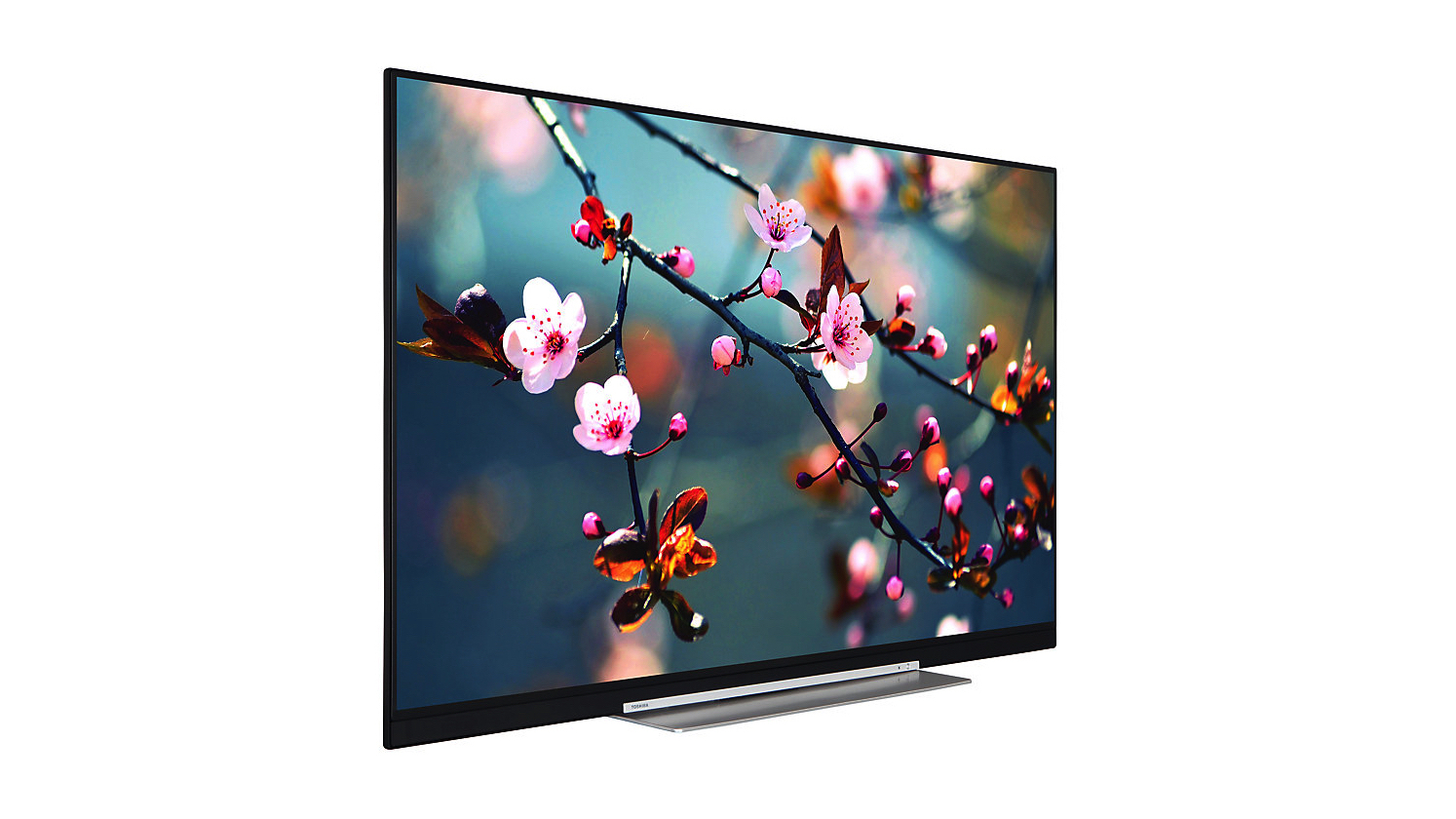TechRadar Verdict
On the upside, the £519 55U7763DB is a clearly better performer than its cheaper, recently reviewed sibling, the 49U6763DB. There’s more detail and better colour refinement. The 55U7763DB is also, of course, pretty darned affordable by 55-inch 4K TV standards. However, as well as not supporting HDR pictures, just being better than the 49U6763DB isn’t enough to make the 55U7763DB a TV we can easily recommend.
Pros
- +
It’s fairly cheap
- +
It looks pretty enough
- +
Good skin tones
- +
Decent sound quality
Cons
- -
Uninspiring black levels
- -
Blurry motion
- -
Average smart system
- -
No HDR support
Why you can trust TechRadar
It’s genuinely exciting to have Toshiba TVs back in the UK market. Especially as the current owner of the brand, Vestel, assures us that real Toshiba TV people are still involved in quality checking the TVs being delivered in its name.
Unfortunately, though, on the evidence of the recently reviewed 49U6763DB and now the 55U7763DB, if Vestel is going to make its Toshiba relationship count, it’s going to have to try a fair bit harder.
Design
Screen sizes available: 49, 55-inch
Tuner: Freeview HD
4K: Yes
HDR: No
Panel technology: LCD with direct LED lighting
Smart TV: Yes/Toshiba’s proprietary interface
Curved: No
Dimensions: 1237(w) x 739(h) x 55(d) mm
3D: No
Inputs: 4 HDMIs, three USBs, RF tuner, SCART socket
The lightweight feel of the 55U7763DB as you lift it out of its box instantly leaves you in no doubt that you’re in the presence of a whole heap of plastic.
While the latest Toshiba TV might not feel very high-end, though, it doesn’t look bad at all when viewed from a typical seating distance. Its frame is stylishly trim, its stand ditches the plastic in favour of some decently heavy duty metal, and the strange little silver bar hanging off the TV’s bottom edge is weirdly cute.
The 55U7763DB is also surprisingly well connected for a £519 55-inch 4K TV. Four 4K-enabled HDMIs is as many as you’ll find on the most high-end of TVs, plus there are three USBs for multimedia playback and recording from the built-in Freeview HD tuner to USB HDD. There’s also an old-school surprise in the shape of a SCART socket - though it’s hard to think of many people who will still be using source equipment that needs one. Hopefully the SCART input is not just a sign of the TV using a dated chassis design.
Design TL;DR: Although its build quality is only cheap and cheerful, its slender frame makes it more attractive and space-saving than most budget TVs.

Smart TV (Toshiba proprietary system)
Toshiba/Vestel have gone their own way with their smart TV ‘engine’. A rather dated looking and sluggish interface provides access to around 50 apps - though only a handful will likely be of much interest to typical UK viewers. These are Netflix, Freeview Play (which provides access to the catch-up TV services of the UK’s biggest terrestrial broadcasters), Twitter and Facebook. The Netflix app supports 4K streams, but unfortunately there’s no sign of the Amazon Video app.
Sign up for breaking news, reviews, opinion, top tech deals, and more.
The Freeview Play app includes an electronic programme guide (EPG) that scrolls back through time as well as forward, to help you find shows you may have missed.
Finally on the smart front, the 55U7763DB lets you share photos from your tablets and smartphones wirelessly.
Smart TV TL;DR: Although there’s nothing special about the 55U7763DB’s smart system, and the lack of Amazon support is unfortunate, having any Smarts at all is arguably a bonus in such a cheap TV.
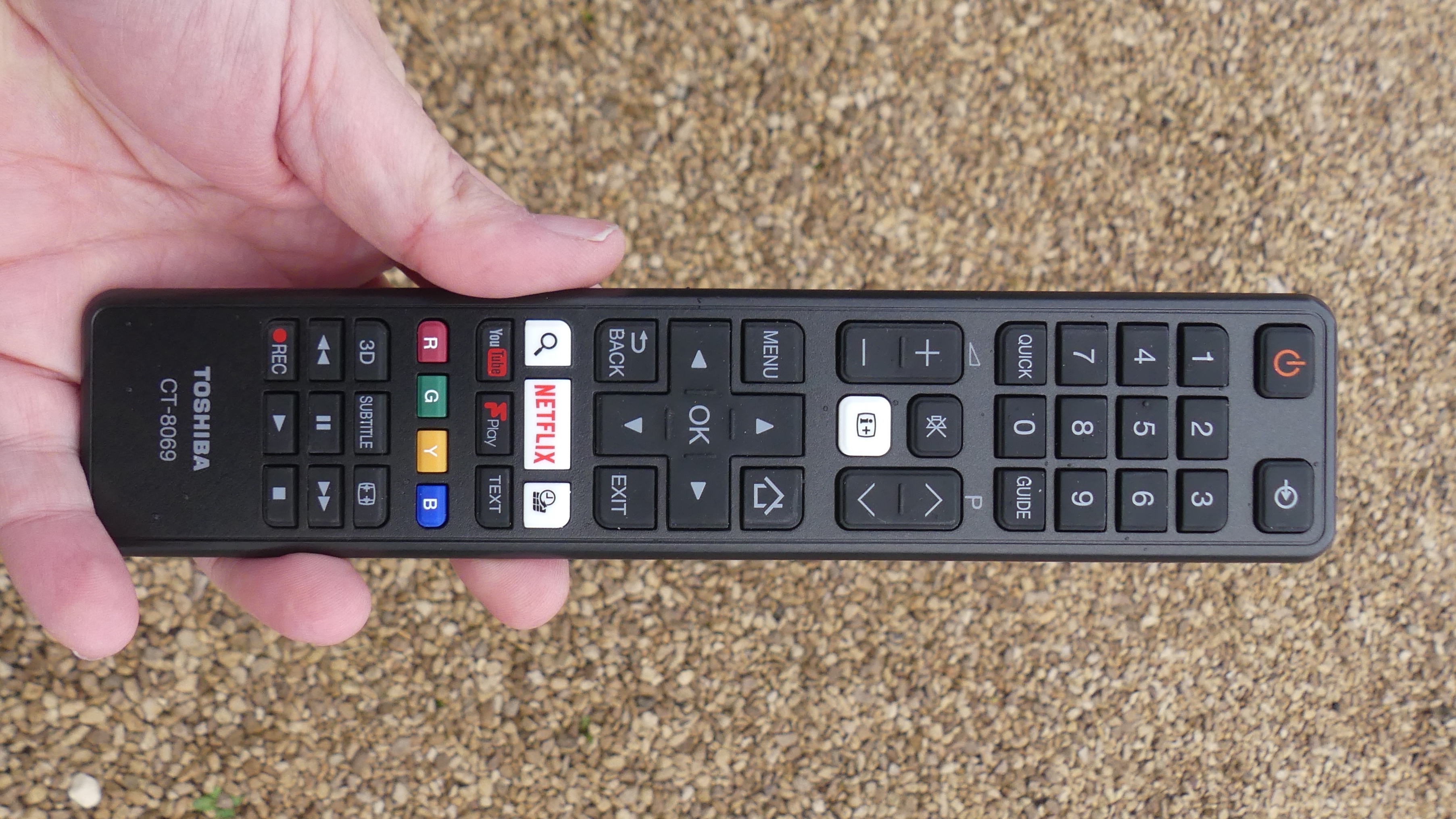
HD/SDR Performance
The 55U7763DB is a disappointingly mixed HD/SDR performer. Starting with the bad news, it doesn’t do a great job of upscaling HD sources to the screen’s native 4K resolution. There’s only a moderate increase in detail and sharpness, and the upscaling engine doesn’t distinguish between source noise and ‘true’ picture information very well. As a result, it tends to sharpen and therefore exaggerate the noise at the same time that it’s trying to enhance the rest of the picture.
Also a problem for the 55U7763DB is its black level performance. No matter what brightness and contrast settings you use, dark scenes always look greyed over and washed out. There’s also often a pronounced bluish undertone to parts of the picture that should look black.
Dark scenes on the 55U7763DB further suffer with seriously distracting amounts of backlight clouding. This is, as you’d expect, at its worst around the sides and corners of the image. It’s also evident over some central areas, though; in fact, I’d say more than half of the picture is affected by backlight inconsistencies to some degree.
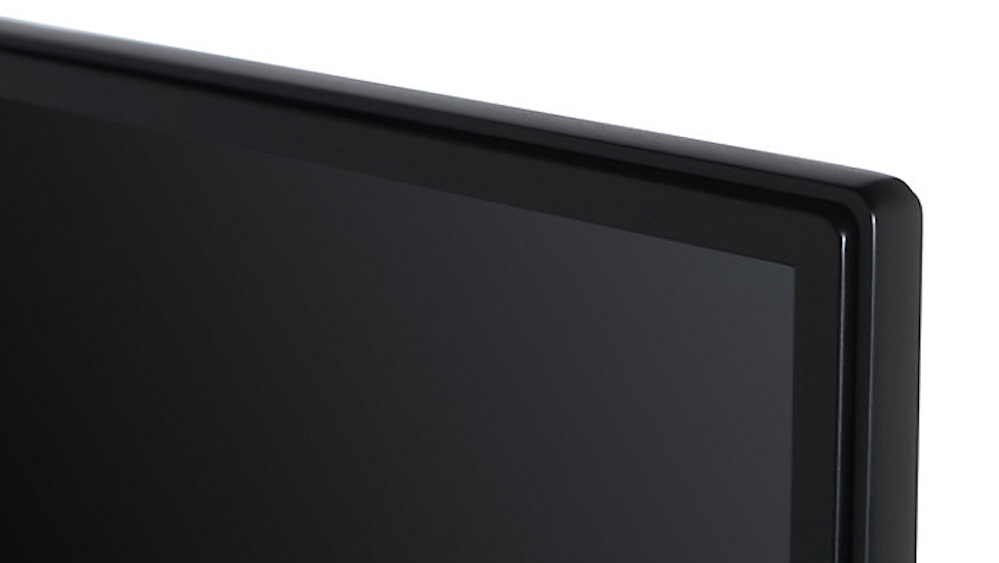
As if all this wasn’t already troubling enough, the various problems the TV has when trying to show dark scenes lead to a loss of shadow detail that leaves images looking one-dimensional and hollow.
One other disappointing thing about the 55U7763DB’s pictures is their motion handling. Objects lose lots of detail as they move across the screen, and sometimes there’s even visible ‘trailing’ behind the moving object.
The 55U7763DB’s strengths include markedly richer but also more subtly toned colours than its cheaper U6763DB sibling - thanks, no doubt, to its wider colour spectrum panel. This is especially noticeable with dark colours, but also means you don’t get the situation experienced with the U6763DB whereby only skin tones tended to look natural while everything else looked uncomfortably ‘basic’.
The 55U7763DB is reasonably bright for a budget TV too, and this, combined with its improved colours, can mean that bright HD/SDR images look decently compelling.
HD/SDR performance TL;DR: Iffy upscaling and motion handling join with a messy backlight to make the 55U7763DB’s HD/SDR pictures too inconsistent for comfort.
4K/HDR performance
The first thing to say here is that the 55U7763DB doesn’t support high dynamic range playback. It does, though, boast a native 4K resolution, which it makes better use of than the cheaper Toshiba U6763DB range.
The difference predominantly comes from the screen’s improved colour performance. Having a wider range of tones at its disposal helps the TV reveal more subtlety in richly coloured and dark areas.
In fact, the combination of improved sharpness and colour management means that it can actually deliver quite engaging pictures with relatively stark, bright, colour-rich 4K sources. (The U6763DB, on the other hand, frankly struggled to look much fun with any content.)

Unfortunately, though, even with merely standard dynamic range 4K content, the 55U7763DB’s various contrast problems are as glaringly obvious as they were in HD. Except that you don’t get the exaggerated source noise caused by the TV’s underwhelming HD-to-4K upscaling.
Given the 55U7763DB’s difficulties with controlling its backlight with SDR, it’s probably just as well that it doesn’t even attempt to handle the expanded light range of HDR.
The 55U7763DB’s motion blur issues, meanwhile, are more distracting with 4K sources than HD ones, simply because they stand out that much more starkly against the enhanced sharpness elsewhere.
One last uninspiring attribute of the 55U7763DB’s pictures is that they generally take almost 50ms to appear. This isn’t shockingly long, but nonetheless it’s around twice the time that anyone hoping to use this TV for gaming would like to see.
4K/HDR TL;DR: Sadly, the times when the 55U7763DB’s pictures are blighted by its motion and contrast problems feel almost as common as the times where they actually look pretty decent.
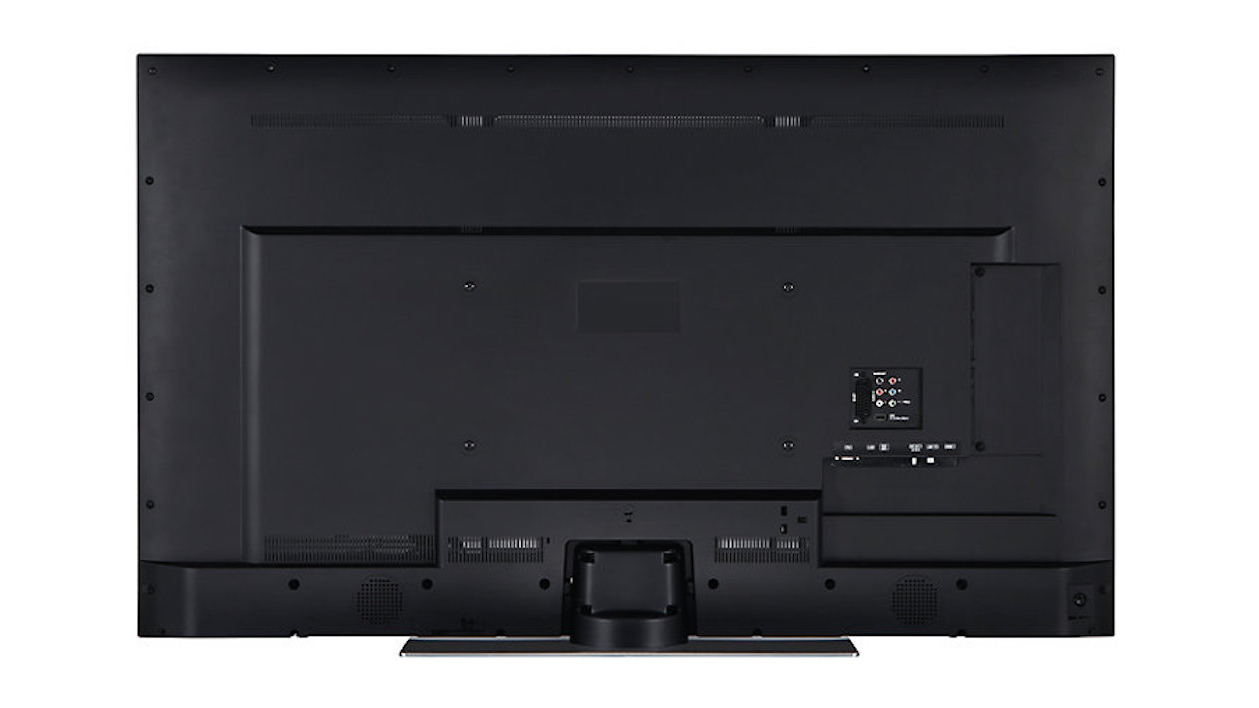
Sound
The 55U7763DB’s forward facing speakers produce a cleaner, more impactful sound than you tend to get with the more common downward-firing TV speaker solutions. There’s a reasonable amount of bass underpinning the surprisingly open-sounding mid-range too - and this bass is delivered without making the plasticky bodywork rattle or hum.
The speakers manage to disperse the sound quite effectively beyond the confines of the TV’s bodywork, too. Really the only complaint we can level at the 55U7763DB’s audio for its money is that the bass speaker can drop out almost completely when the going gets really tough.
Sound TL;DR: The 55U7763DB doesn’t sound bad at all for such a flimsily built and affordable TV.
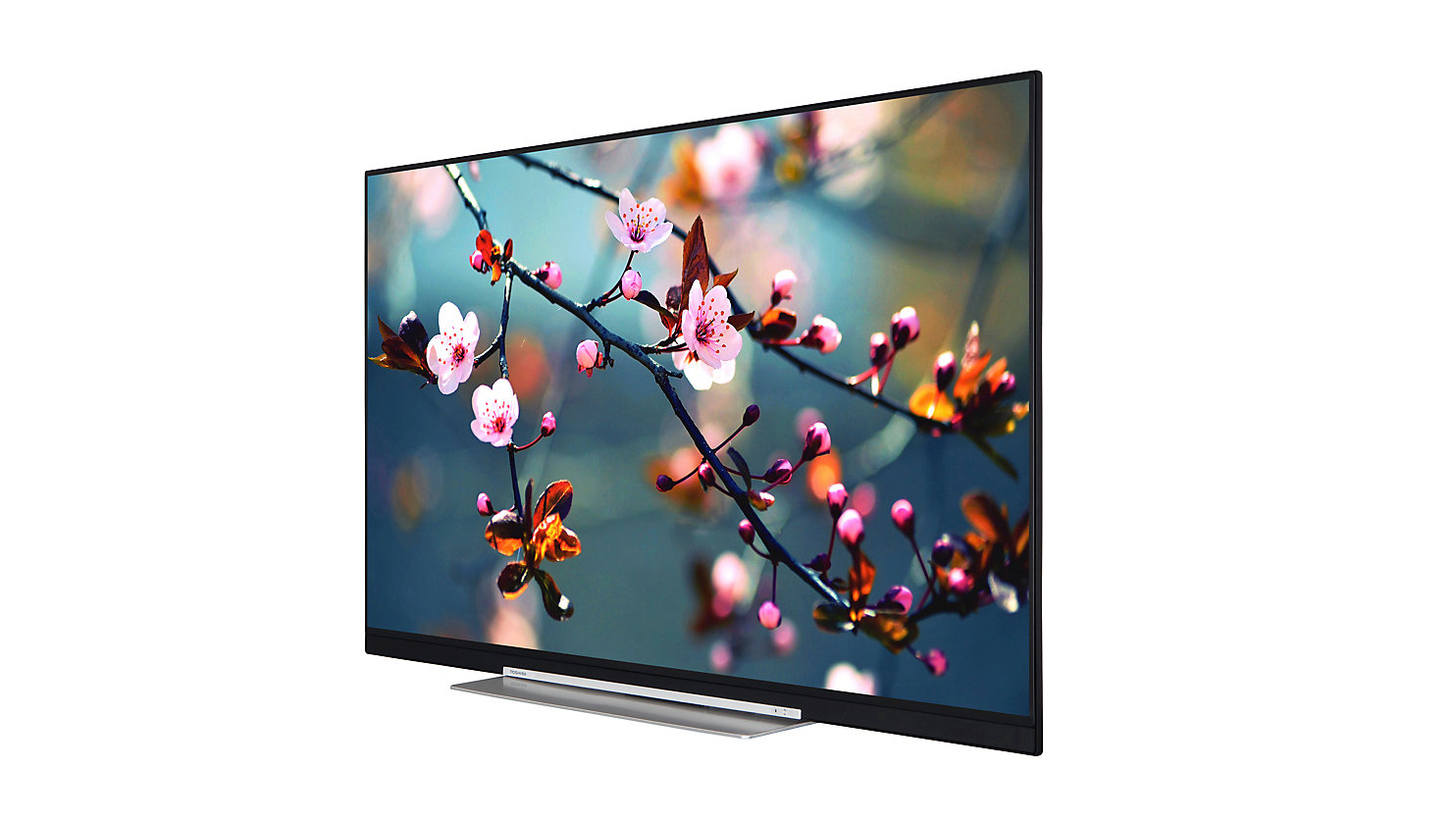
Other panels to consider
Aside from Toshiba’s own, best-avoided U6763DB series, the 55U7763DB’s closest competition are the £530 Philips 55PUS6262 (we've reviewed the 43-inch version, the 43PUS6262) and the £619 Sony KD-55XE70 - both of which better the Toshiba model.
Both offer HDR support for a start, while the Toshiba does not - though it should be said that neither rival set is exactly an HDR hero.
Philips uses the brand’s stylish Ambilight technology to hide its set’s plasticky build quality, and its smart features include Amazon Video in 4K, which you don’t get on the Toshiba. The Philips’ picture quality is crisper and less affected by backlight inconsistencies, too.
The Sony 55XE70 delivers a superior smart system (mercifully free of the clunky Android TV interface Sony often resorts to with its TVs) and some excellent 4K SDR pictures. It lacks the brightness and contrast to do HDR well, but then the Toshiba doesn’t do HDR at all.
Verdict
The good news is that the 55U7763DB is better than Toshiba’s cheaper U6763DB range. The bad news is that this isn’t, in truth, saying very much. While the 55U7763DB’s extra colour range unlocks more detail in its 4K screen and delivers more consistently natural looking bright scenes, it still struggles too much with contrast and motion for comfort.
- For some better picks, check out our guide to the best 4K TVs

John has been writing about home entertainment technology for more than two decades - an especially impressive feat considering he still claims to only be 35 years old (yeah, right). In that time he’s reviewed hundreds if not thousands of TVs, projectors and speakers, and spent frankly far too long sitting by himself in a dark room.
